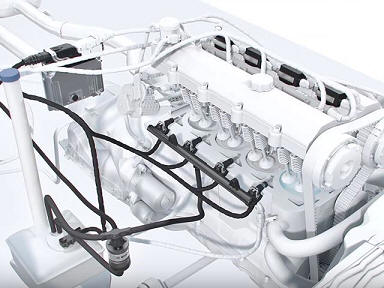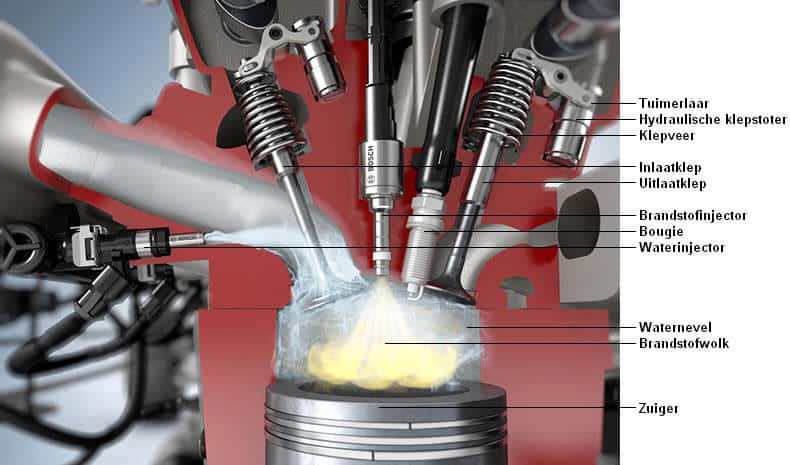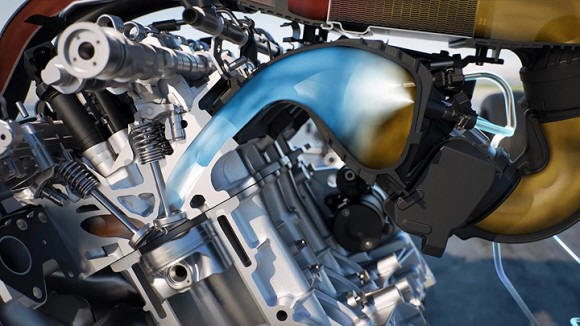Subjects:
- General
- Water Injection Operation
General:
Engines must of course be cooled. The gasoline fuel in a petrol engine also provides cooling. At higher engine loads, the mixture is enriched. There is then an excess of fuel, which among other things ensures that the combustion chamber (the cylinder) is cooled from the inside. This is because the gasoline absorbs extra heat during evaporation. This helps to prevent detonation, where the fuel ignites uncontrollably due to the high temperature of the engine components.
Injecting water into the cylinder also cools the components in the combustion chamber. If an engine is equipped with water injection, no additional fuel needs to be injected to provide cooling; This therefore results in lower fuel consumption and more engine power.

The water in water injection is therefore not used as fuel, as with hydrogen is the case. These techniques should not be confused with each other!
Water injection operation:
The water injector can be mounted in the cylinder head or in the intake manifold of a gasoline engine. This is possible when injecting petrol fuel as well as injecting liquid or gaseous hydrogen that is used as fuel. The water injector should be as close to the inlet valve as possible.
When additional cooling is required in the combustion chamber, the water injector is controlled by the ECU. This will happen when power is required (such as when accelerating or driving at high speeds) and there is a danger of knocking. That is why water injection is also called the “anti-detonation injection”. In cars where only RON98 can be refueled, water injection can also be a solution to refuel RON95, because the water vapor prevents the detonation phenomena.
An external water pump provides the water pressure in the line of the injector. The moment the injector is controlled by the ECU, it will open and a water mist will be injected. The water mist is mixed with the incoming air in the combustion chamber before the inlet valve. The small water droplets evaporate immediately and absorb part of the heat present in the combustion chamber.
The resulting water vapor disappears in the exhaust. Because the amount of water injected is minimal, there are also no dangers of rust or oxidation of the engine parts. The water tank will need to be periodically filled with distilled water.
In the picture below, the water injector is located in the cylinder head.

Engine power also increases when using water injection. A higher turbocharger pressure and earlier ignition are possible without the risk of detonation.
The power of, for example, the BMW M4 GTS increases by no less than 37kW with water injection. That is a power gain of about 10% compared to the “standard M4”. This is coupled with a fuel saving of up to 13% in the situation where a rich mixture is desired; when accelerating and driving at high speeds.
The engine can also run without water injection without any problems. However, the maximum performance cannot be achieved because then there is a lack of cooling. Thus, without the use of water injection, there will be a limitation of the engine power.

